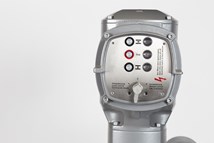Endress+Hauser Launches New Temperature Transmitter
The iTemp TMT31 provides high measurement accuracy, flexible use and safe operation in a variety of process industries
#automation #controls
The newly developed iTEMP TMT31 temperature transmitter for analog 4-20mA signals offers long-term stability, high accuracy and ease of use, for reliable temperature measurement.
Temperature transmitters are an important link between temperature sensors in the field and higher levels of automation and analysis in the process industries.
The iTEMP TMT31 improves upon its RTD transmitter predecessors with better connection technology, available in two optimized formats. The first incorporates push-in terminals, enabling tool-free, secure field wiring in a matter of seconds. It is also available in the classic screw terminal format, with a design that makes wire terminations in the connection head easier. Corrosion-free contacts ensure maximum reliability of measured value transmission for both connection variants.

The iTEMP TMT31 for analog 4-20mA signals
Photo Credit: Endress+Hauser
For fast commissioning, users have the option to receive the TMT31 transmitter conveniently pre-configured from the factory, or to apply custom parameters on site with free configuration software, such as Endress+Hauser FieldCare or DeviceCare. These software packages run on a host of operating systems, both on laptops and tablets. The USB configuration kits required for this, such as TXU10 or Commubox FXA291, are also available from Endress+Hauser as accessories.
Robust ratings and high reliability
The TMT31 is approved for safe operation in Zone 2/Div. 2 hazardous areas (non-sparking) in accordance with ATEX and CSA C/US standards, along with Pt100 and Pt1000 sensors. Additionally, the sensor adjustment parameter in the head transmitter can be modified according to Callendar-Van Dusen equations (CvD) to match the connected RTD sensor characteristics, further refining the temperature measurement accuracy of the entire system.
For more information, check out the iTEMP TMT31 temperature transmitter on the web.
RELATED CONTENT
-
Water Hammer
Water hammer is a shock wave transmitted through fluid contained in a piping system.
-
Valve Basics: Electric Actuator Controls
Electric valve actuators control the opening and closing of valves. With a motor drive that provides torque to operate the valve, these actuators are frequently used on multi-turn valves such as gate or globe and also on ball, plug and other quarter-turn valves.
-
Introduction to Pressure Relief Devices - Part 1
When the pressure inside equipment such as boilers or pressure vessels increases beyond a specified value, the excess pressure may result in a catastrophic failure.










 Unloading large gate valve.jpg;maxWidth=214)